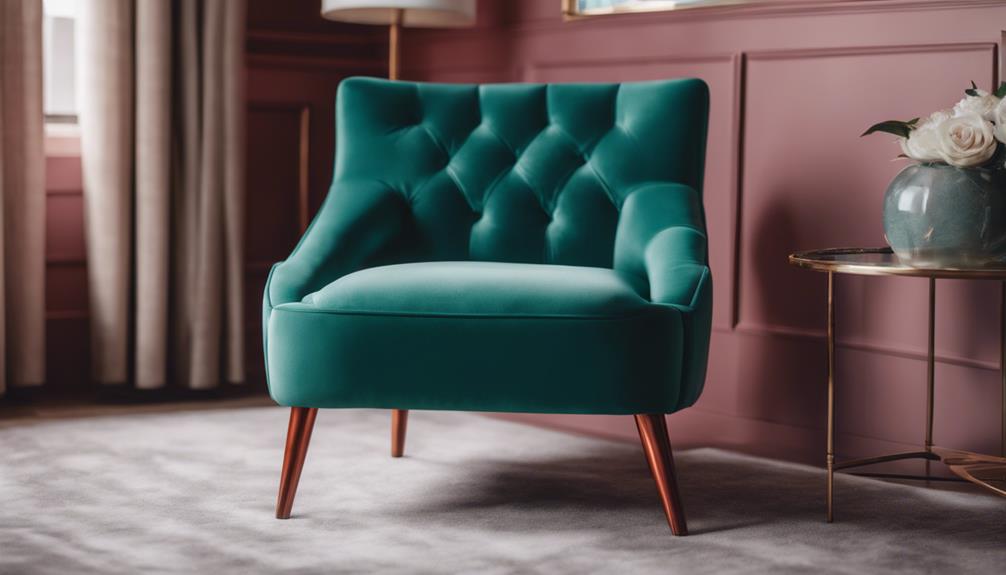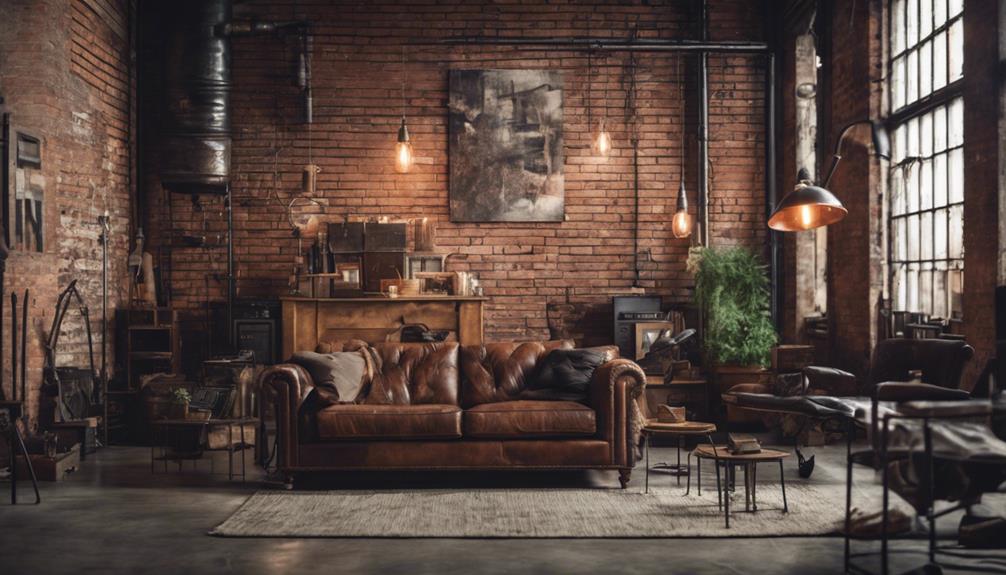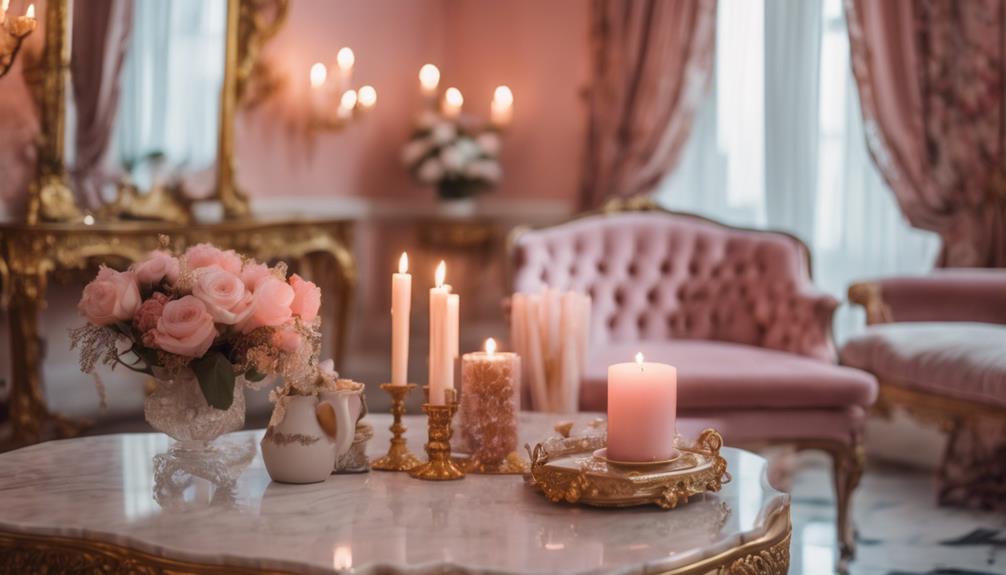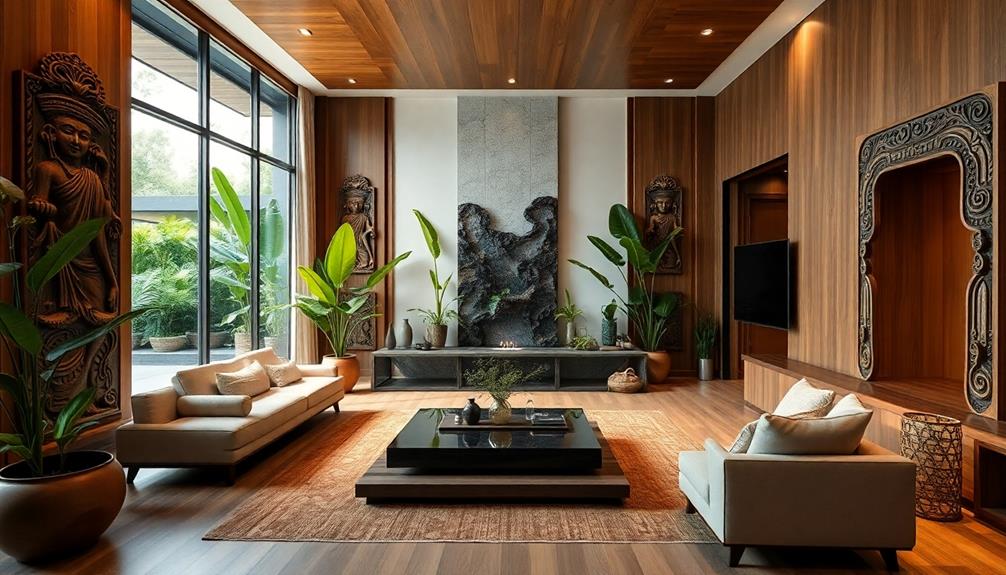Looking for an accent chair that'll make your followers tweet about its style? Opt for vibrant red or tropical print designs to add a fresh pop to your space. Consider swivel chairs for versatility, and pair with ottomans for extra coziness. Experiment with bold colors and textures for a trendy look that harmonizes with your room's aesthetic. Make sure to prioritize comfort with plush cushioning and back/arm support. Discover chic pairings and unique designs such as the Crosby St. Hadley Tufted Back or Ty Pennington Cruz Metal Chair. Your followers will adore your style choices!
Key Takeaways
- Opt for a trendy swivel accent chair in a vibrant red or tropical print for a stylish and eye-catching statement piece.
- Choose an accent chair with unique design elements like tufted back or metal accents to spark conversation and admiration.
- Look for a mix of textures and colors to create a modern and Instagram-worthy seating area that stands out.
- Consider compact and budget-friendly options like the Crosby St. Hadley Tufted Back or Ty Pennington Cruz Metal Accent Chair for small spaces.
- Prioritize comfort and style by selecting a stain-resistant fabric with plush cushioning and back/arm support for a cozy and chic seating experience.
Style Trends for Accent Chairs
Explore the newest style trends for accent chairs to elevate the aesthetic of your living space and make a statement with your decor choices.
When it comes to adding a pop of color to your room, opt for vibrant red accent chairs. These eye-catching pieces inject energy and personality into your space, instantly drawing the eye and creating a focal point.
Additionally, swivel accent chairs are a stylish and practical choice. Offering both comfort and movement options, swivel chairs provide a versatile seating experience that can adapt to various activities in your living area.
Another stylish trend to check out is accent chairs with tropical prints. These designs bring a touch of nature indoors, adding a fresh and vibrant feel to your decor.
For a cozy and inviting setup, pair your accent chairs with ottomans to create relaxation spots perfect for lounging or reading.
Best Accent Chair Materials
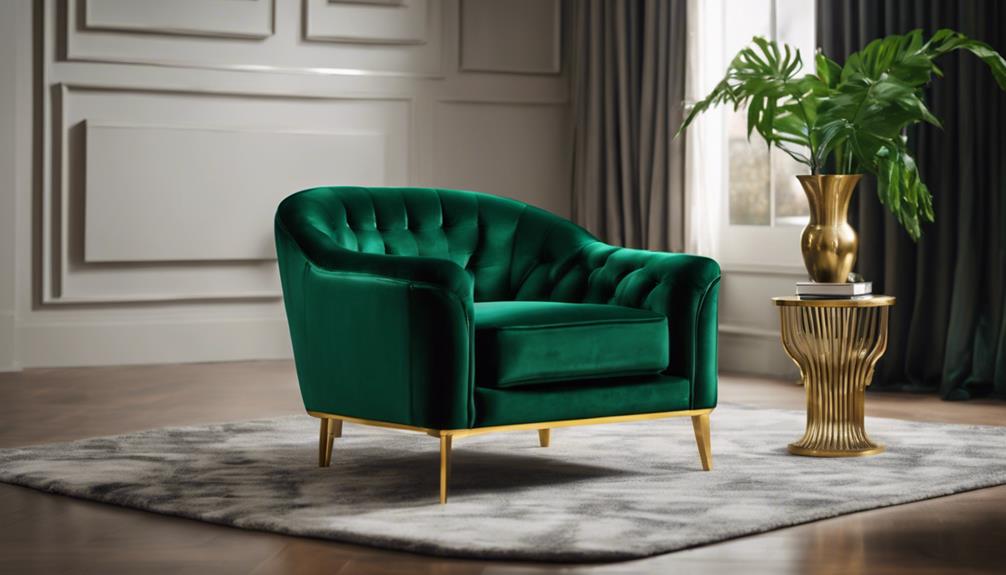
When selecting the ideal accent chair for your space, take into account the chair material carefully. Different materials provide different levels of comfort and durability, so choosing one that fits your style and needs is crucial.
From sumptuous velvet to timeless leather, each material brings its own distinct texture and aesthetic to the room.
Chair Material Selection
For the best accent chair materials, consider the following options to elevate your space with style and functionality.
When choosing a material for your accent chair, leather is a classic choice that offers a balanced look and luxurious feel. Opt for smooth leather for a sophisticated touch.
If you prefer a more opulent feel, velvet is an excellent option. Plush velvet adds warmth and elegance to any room.
For those concerned about maintenance, stain-resistant fabric is a practical choice, especially in households with children or pets.
When selecting fabric options, make sure it complements the existing textures in your space for a cohesive appearance.
To wrap up, don't forget about comfort consideration. Make sure the fabric you choose aligns with your desired comfort level to create the perfect accent chair experience.
Whether you go for a leather accent chair, a velvet accent piece, or explore different fabric options, prioritize both style and comfort in your decision.
Fabric and Texture Options
Consider integrating various fabric and texture options to enhance the style and character of your accent chair.
Velvet fabric offers a luxurious feel and adds warmth to your room's ambiance, making it an exceptional choice for a cozy and elegant look.
On the other hand, leather upholstery provides a classic and sophisticated appearance, perfect for a timeless and refined aesthetic.
If you have children or pets, opt for stain-resistant fabric to guarantee easy maintenance and longevity.
Textured fabrics like boucle or tweed can introduce depth and personality to your accent chair, creating visual interest and tactile appeal.
For a more eclectic touch, consider materials such as rattan or wicker, ideal for a bohemian or coastal-inspired design.
Comfort and Durability
Choosing accent chairs with top ratings for comfort and durability can secure long-lasting satisfaction in your living area.
When considering the best materials for your accent chair, it's crucial to prioritize both comfort and durability.
The Crosby St. Hadley Tufted Back Accent Chair in Charcoal Grey stands out with a Quick View rating of 4.6 out of 5, emphasizing its comfort and style.
For stability and long-lasting support, the Papasan Chair Base, rated 4.8 out of 5, secures durability.
The Papasan Bowl Chair, with a rating of 4.7 out of 5, offers a perfect blend of comfort and durability in its design.
If you're looking for a balance of comfort and style, the Crosby St. Hadley Tufted Back Accent Chair in Taupe, rated 4.5 out of 5, is a great choice.
Color Palette Inspiration for Accent Chairs
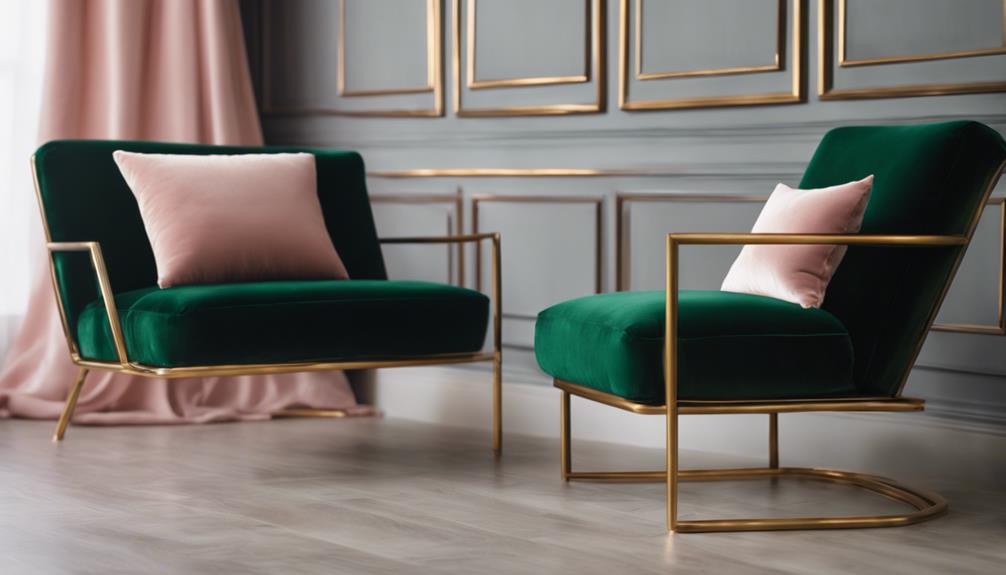
When choosing colors for your accent chair, experiment with bold options like orange, pink, or yellow to infuse energy into your space.
Consider matching or contrasting with existing room elements for a cohesive look that makes a statement.
Additionally, think about the texture of the fabric to enhance the overall aesthetic and create visual interest.
Color Scheme Ideas
For a sophisticated touch in your home decor, explore various color scheme ideas to complement your accent chair style. When selecting a color scheme for your living room chair, consider modern styles that create a visual point of difference in your interior design. Here are some color palette inspirations to enhance the look of your accent chair:
| Accent Chair Color | Complementary Colors |
|---|---|
| Charcoal Grey | Soft Blush Pink, Navy Blue |
| Taupe | Mustard Yellow, Olive Green |
| Papasan Bowl Chair | Rust Orange, Teal Blue |
| Grey | Cream White, Silver Grey |
Matching Room Elements
Consider harmonizing your accent chair with existing room elements such as the wall color, curtains, or rug to achieve a cohesive and visually appealing space. When selecting the color palette for your accent chair, aim to complement the hues already present in the room. By choosing a chair that blends well with the existing colors, you can create a balanced and harmonious atmosphere.
Introducing a pop of color through the accent chair can tie together different décor elements, adding visual interest to the room. Experimenting with shades and tones within the same color family can help add depth to the space. Opting for an accent chair that enhances the overall aesthetic by coordinating with existing color schemes and patterns will elevate the room's style.
Fabric Texture Selection
To achieve a cohesive and visually pleasing look for your accent chair, pay attention to the fabric texture selection, drawing inspiration from the color palette of the room. Consider incorporating contrasting textures like a sleek metal frame paired with a soft fabric seat to add depth and interest to the space.
Opting for stain-resistant fabrics is a practical choice for households with children or pets, ensuring easy maintenance and longevity of your accent chair.
When it comes to fabric textures, think about the overall aesthetic you want to achieve. Smooth leather can provide a balanced look, while plush velvet offers a cozy and luxurious feel. Selecting fabric textures that complement existing room elements will enhance the room's decor and create a cohesive atmosphere.
Remember that the fabric texture of your accent chair not only adds style but also contributes to the comfort and functionality of the piece.
Styling Tips for Accent Chairs
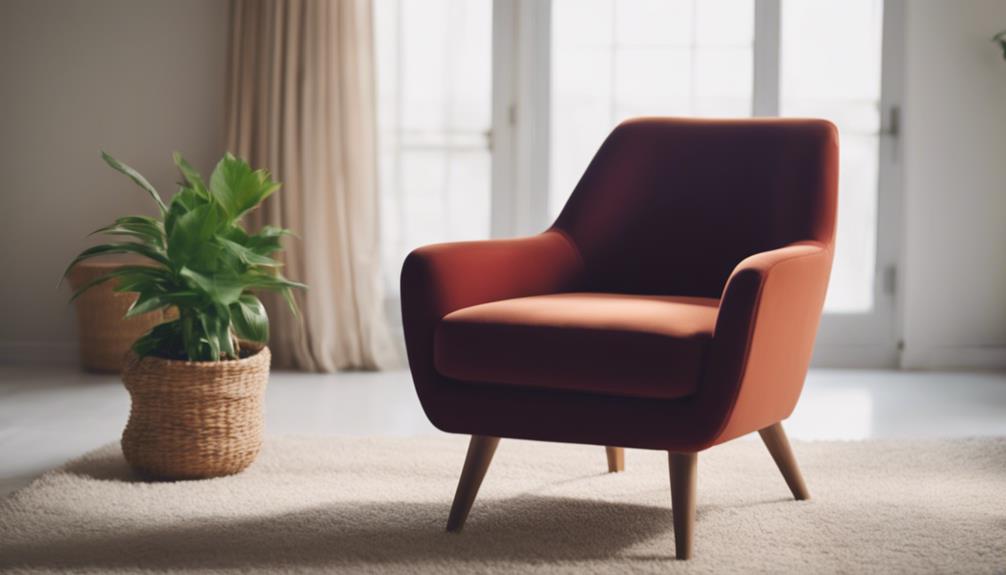
When styling accent chairs, focus on choosing patterns and textures that harmonize with the existing elements in the room. Take into account contrasting or monochromatic color schemes to make sure the chair styles blend seamlessly into your living space. Making a statement with your accent chair involves selecting a design that not only adds comfort and style but also complements the overall aesthetic of the room. Opt for a chair scale that aligns with other furniture pieces for a cohesive look. To help you in your styling journey, here are some tips to keep in mind:
| Tip | Description | Example |
|---|---|---|
| Color Scheme | Choose colors that either contrast or match the room decor. | A navy blue chair in a beige living room. |
| Texture Selection | Opt for textures that complement existing elements. | A velvet chair against a leather sofa. |
| Scale Alignment | Ensure the chair's size fits well with other furniture. | A large chair in a spacious living room. |
Comfort Features to Look For
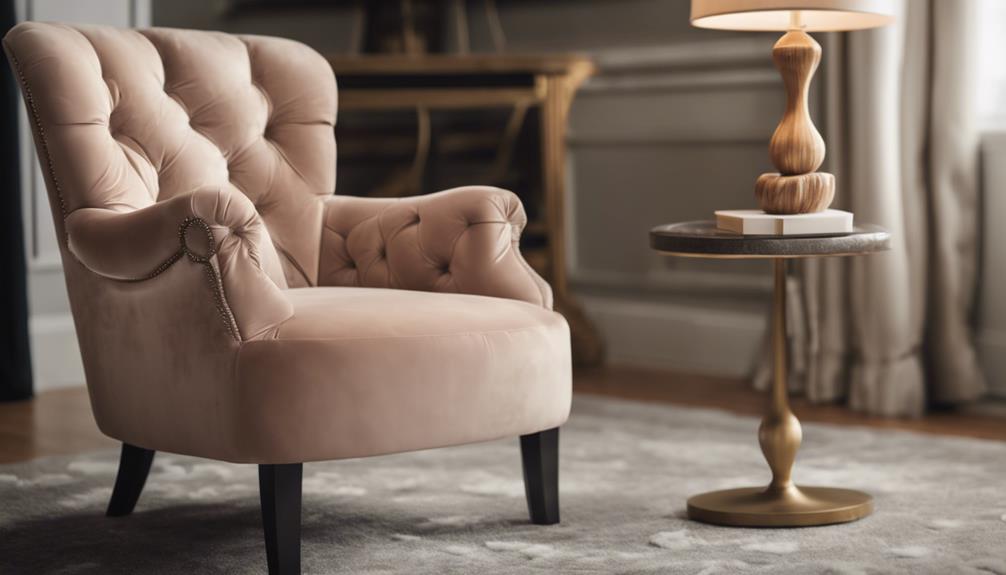
Look for comfort features in accent chairs that enhance your relaxation and lounging experience. When selecting an accent chair, prioritize options that aren't only stylish but also comfortable to sit in for extended periods. Modern accent chairs often come with plush cushioning that provides ample support for your back and your arms.
Consider chairs like the Crosby St. Hadley Tufted Back Accent Chair in Charcoal Grey or Taupe, which have garnered positive reviews for their comfort levels. Additionally, accent chairs like the Papasan Chair Base and Papasan Bowl Chair offer a cozy seating experience with their unique designs and soft upholstery. These chairs are perfect for creating a relaxing corner in your living room or bedroom.
If you prefer a more contemporary look, the Ty Pennington Cruz Metal Accent Chair in Grey combines comfort with a sleek, modern aesthetic. Prioritizing comfort features in accent chairs ensures that you not only have a stylish piece of furniture but also a cozy spot to unwind after a long day.
Accent Chairs for Small Spaces
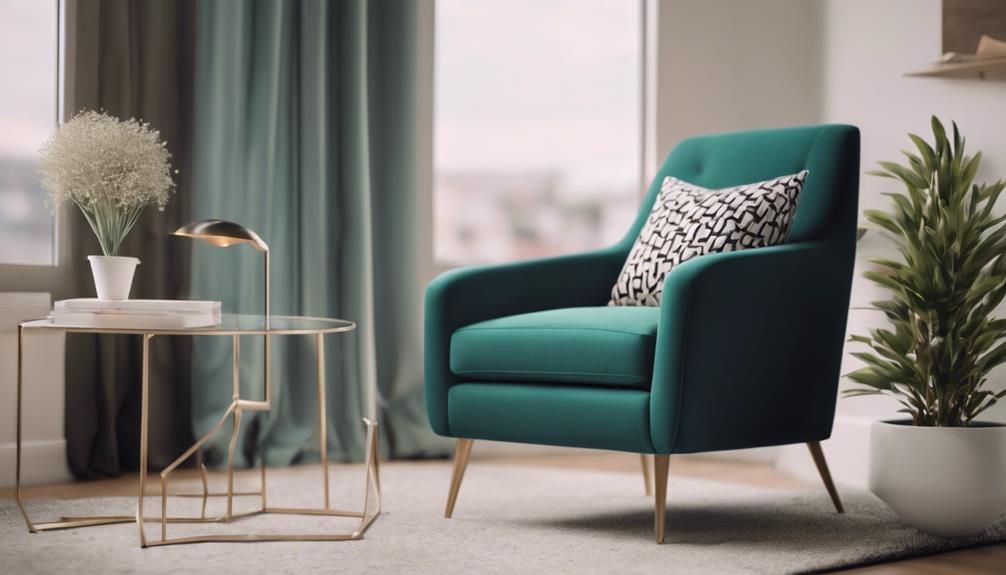
Consider compact accent chairs like the Crosby St. Hadley Tufted Back Accent Chair in Charcoal Grey or Taupe for small living spaces. Priced at $299, the Charcoal Grey option boasts a Quick View rating of 4.6 out of 5 based on 12 reviews, while the Taupe version, priced the same, holds a rating of 4.5 out of 5 from 19 reviews.
These accent chairs are perfect for smaller spaces, providing extra seating without overwhelming the room. For an alternative option, the Ty Pennington Cruz Metal Accent Chair in Grey, priced at $239 and with a perfect Quick View rating of 5 out of 5 from 11 reviews, is great for adding style to small spaces.
Additionally, the Papasan Chair Base and Papasan Bowl Chair, both with high Quick View ratings, are ideal choices for compact areas. When selecting an accent chair for a small space, these options offer both functionality and style, making them perfect additions to your home.
Accent Chair Pairing Ideas
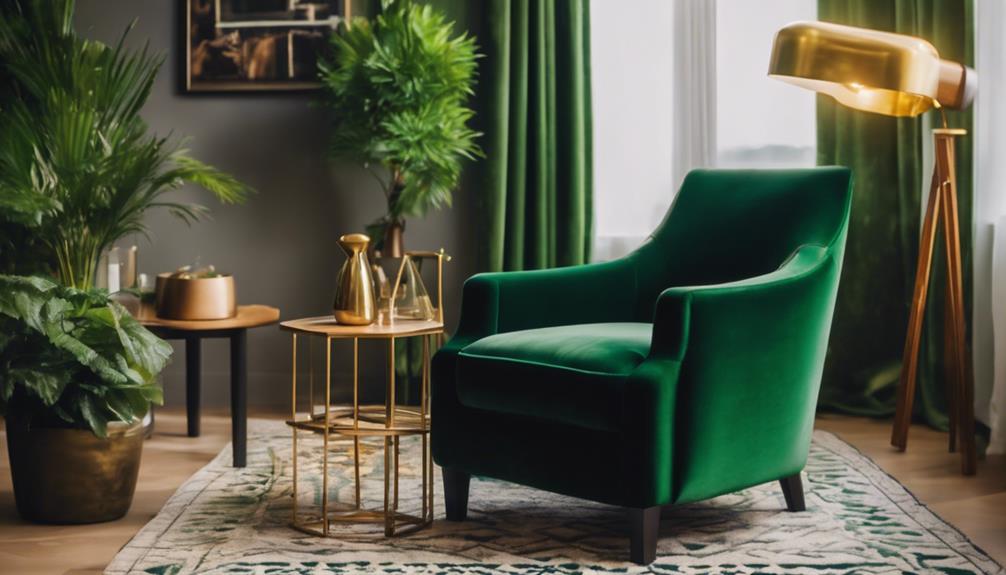
Explore creative ways to pair accent chairs in your living space to enhance both functionality and style.
Consider combining the sturdy base of a Papasan Chair with the elegant seating option of the Crosby St. Hadley Tufted Back Accent Chair in Taupe for a chic and comfortable seating arrangement.
The Papasan Bowl Chair, known for its cozy seating option, can be paired with the stylish Ty Pennington Cruz Metal Accent Chair in Grey to create a trendy and inviting corner in your home.
Opt for a mix of textures and colors by pairing the Crosby St. Hadley Tufted Back Accent Chair in Charcoal Grey with the Papasan Chair Base to achieve a modern and cozy seating area.
Experiment with different combinations to find the perfect balance between functionality and style, whether you're aiming for a sophisticated look or a more relaxed ambiance in your living space.
Unique Accent Chair Designs
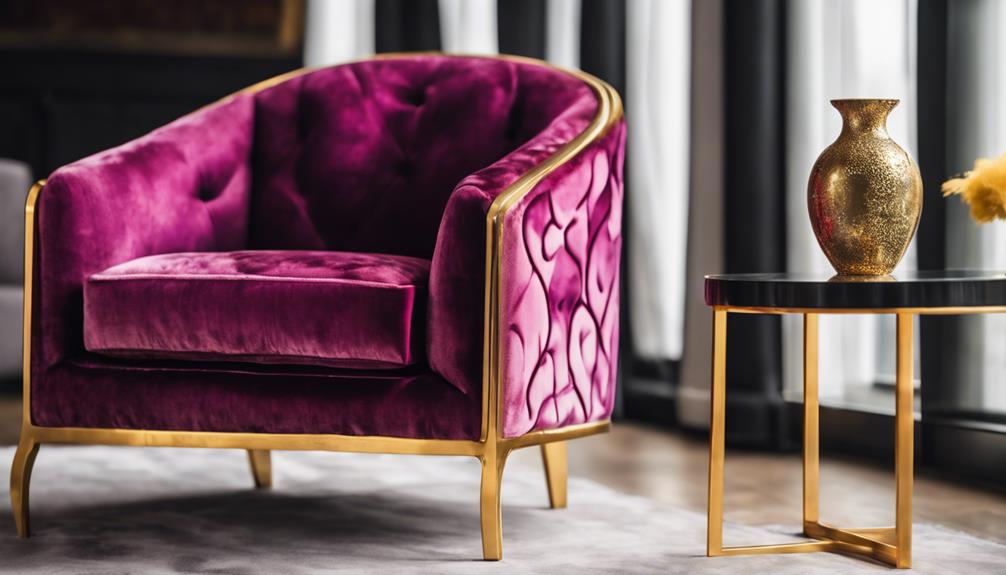
Discover a range of unique accent chair designs that effortlessly blend style, comfort, and quality to elevate your living space decor.
The Crosby St. Hadley Tufted Back Accent Chair offers Charcoal Grey and Taupe options, priced at $299 each with impressive Quick View ratings of 4.6 and 4.5 out of 5, respectively.
For a cozy seating experience, the Papasan Chair Base, rated 4.8 out of 5, provides a sturdy foundation. Combine it with the Papasan Bowl Chair for a comfortable and stylish seating option, boasting a 4.7 out of 5 Quick View rating.
If you seek a standout design, consider the Ty Pennington Cruz Metal Accent Chair in Grey, priced at $239 with a perfect 5 out of 5 Quick View rating, showcasing its excellent design and quality.
These accent chairs not only add a touch of elegance to any room but also offer a perfect balance of style and comfortable seating, making them a must-have for those looking for unique and stylish options.
Budget-Friendly Accent Chair Options

Looking for affordable accent chairs that won't break the bank? If you want style and comfort without the hefty price tag, there are great options available.
The Crosby St. Hadley Tufted Back Accent Chair in Charcoal Grey, priced at $299, offers a stylish choice with a high Quick View rating of 4.6 out of 5 from 12 reviews.
Another popular pick is the Papasan Chair Base, boasting a Quick View rating of 4.8 out of 5 from 13 reviews, making it a favored affordable accent chair option.
For those seeking a cozy addition to their space, consider the Papasan Bowl Chair. With a Quick View rating of 4.7 out of 5 from 59 reviews, this chair provides both comfort and style at a budget-friendly price point.
If you prefer a different color, the Crosby St. Hadley Tufted Back Accent Chair in Taupe is also priced at $299 and has a respectable Quick View rating of 4.5 out of 19 reviews.
Another stylish and affordable choice is the Ty Pennington Cruz Metal Accent Chair in Grey, priced at $239 and rated a perfect 5 out of 5 from 11 reviews.
Conclusion
So go ahead, find that perfect accent chair that speaks to your style and personality.
Whether it's a bold pop of color, a cozy reading nook, or a statement piece that sparks conversation, let your accent chair be the tweet-worthy star of your home decor.
With the right chair, you'll be sitting pretty and sharing your stylish space with the world in no time!
